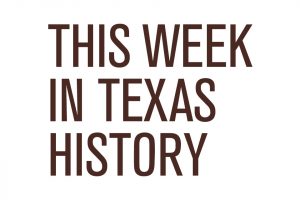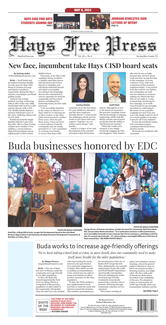With no more buffalo left to slaughter, the last of the High Plains hunters, as shaggy as the beasts they once stalked, departed the Panhandle on July 23, 1879.
The wild rush of gold-seekers to California in 1849 split in half the multitude of North American bison. The coming of the transcontinental railroad a couple of decades later made permanent the division of the mighty millions into the northern and southern herds.
While the Plains Indians eliminated 500,000 buffaloes annually, the net loss was negligible. Adding the modest toll taken by the occasional white hunter, who killed for sport or to sell the meat back east as tangy beef, the species was in no danger of extinction.
In fact, as late as 1868, soldiers and civilians often encountered the animal in mind-boggling numbers. Gen. Phil Sheridan reported riding for hours through a herd of countless thousands, and a train passenger wrote, “Miles beyond miles were covered with them, while upon close observation, the long level line of the distant horizon proved to be a moving mass of life.”
But a trivial event in 1871 sealed the buffalo’s fate. Wright Mooar sent a sample of hides to his brother John in New York City.
Hoping to turn the exotic skins into quality leather, a curious tanner purchased the whole shipment. Several weeks later, he placed an urgent order with John Mooar for 2,000 hides, and the commercial extermination of the buffalo commenced.
After two years of profitable plunder in Kansas, the Mooar brothers decided to investigate the Texas Panhandle where buffalo were said to be unbelievably plentiful. According to Wright, they found gigantic herds that “all day opened up before us and came together behind us.”
Risking attack from hostile Indians and arrest by the Army, a band of hunters slipped into the forbidden zone in the spring of 1874. Near the Canadian River they built the Adobe Walls trading post a mile from the site of an earlier enterprise of the same name.
Later that year, the rout of the Comanches at Palo Duro Canyon made the Panhandle safe for buffalo hunters. Fifteen hundred invaded the area between present-day Amarillo and San Angelo, and the killing began in bloody earnest.
The Mooars went straight to work in the Brazos River valley southwest of modern Seymour. In less than two months, they had 4,000 skins ready for market.
As the caravan of 54 ox-drawn wagons slowly rolled toward Denison, entire communities lined the dusty trail. Most residents of North Texas had never seen a buffalo, dead or alive, and scoffed at stories of the shaggy brutes in enormous numbers roaming the western part of the state.
For their next expedition in the fall of 1876, Wright and John Mooar moved farther south in search of elbow room and a fresh source of valuable hides. At the southern edge of the buffalo range near the future town of Sweetwater, they found their own private preserve and literally made a killing.
At the end of their second hunt, the Mooars no longer had to make the long trip to North Texas to ship the hides. For the convenience of the busy hunters, Fort Griffin catered to their every need.
The top dollar that greedy middle-men gladly paid for the hides was spent on supplies for the next killing spree. A single store in bustling Fort Griffin did $4,000 a day in buffalo-related business.
During the lonely weeks of isolation, the typical hunter swore to resist the temptations of the local red-light district. But a pocketful of money made it mighty hard to pass up the whiskey, women and games of chance.
Before reentering polite society, a bath and a shave were mandatory. As one nauseated observer noted, “The buffalo hunter goes clad in a coarse dress of canvass, stiffened with blood and grease. His hair often goes uncut and uncombed for months together, and his hands are frequently unwashed for many days while his person is a paradise for hordes of nameless parasites.”
The scope of the slaughter defied description. According to a conservative estimate, 4.3 million buffaloes were killed in a three-year span, and this figure did not include the carnage in Texas, New Mexico, Colorado and the Indian Territory. During the devastating decade of the 1870’s, the terrible toll exceeded seven and a half million.
Many twentieth-century historians and novelists portrayed the buffalo hunter as a heroic purifier of the plains. He purged the prairie of a “useless” creature that blocked western expansion and his eradication of the Indians’ primary food source forced the nomadic tribes onto the reservation.
But consequences never should be confused with motives. To contend the buffalo hunter performed his gruesome chore for anything more than money misses the point and obscures the lesson for us all.
Visit barteehaile.com for Bartee’s books “Murder Most Texan” and “Texas Depression-Era Desperadoes” and bound collections of his Texas history columns from the past 32 years.






